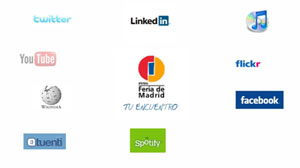By: Ruediger Dorn , Director Innovation, WW Technology Office MS Corp
Tags: cloud computing, health users group, Healthcare
Can cloud computing put patients in control of their own health information? How can innovations in cloud technology help improve general standards of care across Europe? What are the benefits for healthcare organisations that have adopted the cloud as part of their operational structure? What are the benefits for the users?
Care organisations are already coming forward from both the private and public sectors to show how the unique benefits of cloud computing can transform their businesses in terms of savings and improved service levels. Not only does cloud computing automate certain processes which previously created a burdening administrative workload, it also enables a large amount of data to be made available in one place. Indeed – as this series of video interviews taken at a recent Health Users Group (HUG) event in Brussels shows - many organisations working within the field believe that this kind of use of the cloud in eHealth is essential.
The cloud can create a cross-border source of information not only for organisations, but also for patients. In addition to the savings and efficiencies for organisations, the patients experience a far more active role in managing their own health because they can have access to their own health information, such as treatment instructions, wherever they go. And eHealth goes further than treatment alone—nutrition and general wellness information can also be used to its fullest extent on the cloud.
The following video demonstrates that cloud computing can put patients in control of their own health information, which underlines a core value in technological innovations: a greater focus on people.
Vital value of the cloud - delivering... by MicrosoftEurope
Vital value of the cloud - delivering... por MicrosoftEurope
Recopilación de noticias, notas de prensa, páginas web y curiosidades sobre nuevas tecnologías relacionadas con la industria farmacéutica, la comunicación y la edición científica
dimarts, 21 de juny del 2011
IFEMA se posiciona como uno de los organizadores feriales más activo del sector en Redes Sociales
Ifema ganadora del concurso internacional de redes sociales de la UFI: "Ifema ganadora del concurso internacional de redes sociales de la UFI"
IFEMA ha resultado ganadora del concurso internacional 'Best Practice of Social Media within the exhibition industry' convocado por la UFI, -Unión de Ferias Internacionales- con el objetivo de destacar la mejor estrategia de comunicación desarrollada por organizadores feriales de todo el mundo en Redes Sociales.

El fallo del concurso se ha celebrado en Kiev, tras una detallada presentación de las acciones llevadas a cabo por los tres finalistas, entre los que se encontraban, además de IFEMA, Poznan International Fair Ltd., de Polonia, y Reed Exhibitions, ReedPOP, de Estados Unidos.
El premio ha reconocido la estrategia global de IFEMA en Redes Sociales, que contempla tanto un enfoque institucional, como el desarrollo de acciones específicas para cada una de sus ferias. La exposición de la propuesta se ha centrado en algunos casos de éxito como CMFW, Soy Cibelino, Simo Network, Fitur y ARCOmadrid.
La experiencia de IFEMA en Redes Sociales le ha llevado, en tan sólo 16 meses, a conseguir más de 60.000 seguidores en Facebook, cerca de 13.000 followers en Twitter, y más de 80.000 reproducciones de sus vídeos en Youtube. Además cuenta con perfiles en Linkedin, Flickr, Spotify y Tuenty, y está desarrollando aplicaciones gratuitas de sus ferias para smartphones, tras su exitosa experiencia en la pasada edición de ARCOmadrid.
Con este reconocimiento internacional, IFEMA se posiciona como uno de los organizadores feriales más activo del sector en Redes Sociales. Asimismo, se verá favorecida de una especial promoción que la UFI realizará en sus diferentes canales y próximos congresos.
Más sobre IFEMA:
Etiquetes de comentaris:
comunidades y redes sociales,
model negoci
a pesar de todo, los anuncios en las revistas son lo que se quedan más en la memoria.
FIPP.com | News | Brain study shows magazine advertising boosts engagement:
"Research by ACP Magazines and Neuro-Insight Research, a neuroscience research agency has revealed that amongst all forms of media, magazines boast the highest levels of consumer engagement."
"Research by ACP Magazines and Neuro-Insight Research, a neuroscience research agency has revealed that amongst all forms of media, magazines boast the highest levels of consumer engagement."
By measuring brain activity during a magazine reading process, the research found that compared to television, internet, radio and out-of-home, magazines receive the most intense level of engagement and material consumed often gets stored into readers’ long term memory.
Phil Scott, ACP magazines’ managing director says: “[The research] confirms what we already know: consumers love magazines. They involve, inspire, engage, evoke emotions, resonate, motivate and inform.”
Advertising featured in magazines is also highly effective, as the research reveals that brand salience increases significantly with consumers after reading a magazine, with an average rise of 7.3 per cent.
Brand salience is the measure of the degree to which a brand is thought about or noticed when a customer is in a buying situation, and whether or not the advertisement enters the reader’s long-term memory.
More importantly, brand salience with brands that have previously advertised in earlier issues of a magazine measure 15 per cent higher than the global average, showing significant in-built emotional brand equity that consumers already developed from previous magazine exposures.
Brand salience for competitor brands that do not advertise in a particular issue also drops by an average of 8.2 per cent, further cementing the effectiveness of appearing in a magazine.
“Quite simply,” says Scott, “magazines work for consumers and for advertisers”.
Hence, the lesson to take away today is: placing an ad in a magazine not only helps consumers gain brand retention and positive brand salience for your brand, but from a competitive point of view, it also helps break away your competitor’s influence on your target audience.
10 beneficios de estar en una red |
Subscriure's a:
Comentaris (Atom)